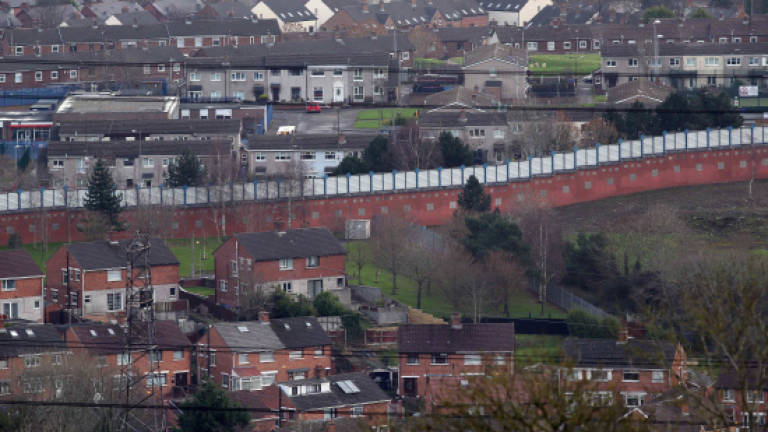The turbulent times that shaped Northern Ireland

PARIS: Tensions between Catholics and Protestants in Northern Ireland go back decades with violence in "The Troubles" in the 20th century killing more than 3,500 people and injuring thousands more.
But the history of conflict on the island of Ireland goes back many more centuries.
Here are some turning points in its history.
Conquest and religion
The island's early residents, the pagan Gaels, assumed Christianity around the fifth century when Catholicism's Saint Patrick, today the patron saint of Ireland, was a missionary.
Protestantism arrived with the 12th century Anglo-Norman horsemen invaders and was reinforced from 1556 when conquering England began sending in Protestants to settle on confiscated Catholic land in the northeast, a policy called the "plantations".
Catholics however remained in the majority on the island, except in northeastern areas.
The Potato Famine
The Irish population was decimated by famine in 1845-1848 when the staple food, the potato, was ravaged by blight, causing successive crop failures.
Between half a million and 1.5 million people died from disease or starvation and a million more were forced to leave, many emigrating to the United States.
War splits the island
Led by a Catholic group called the Irish Republican Army, a guerrilla war for independence from Britain was launched in 1919.
The civil war resulted in the island's split in 1921 into a Catholic-majority Irish Free State in the south and a Protestant-majority Northern Ireland, or Ulster, which remained within the United Kingdom.
The larger southern section adopted in 1937 a constitution that gave birth to Ireland, or Eire in the Gaelic language, and the Republic of Ireland was proclaimed in 1949.
Bloody conflict
Anger among minority Catholics in Northern Ireland over discrimination in voting rights, housing and jobs erupted into riots in 1968 and authorities sent in the British army.
It marked the start of a bloody three-decade period of unrest called "The Troubles".
In 1970 the pro-Catholic Provisional Irish Republican Army (IRA), rooted in the organisation that fought in the independence war, launched a campaign of bombings and shootings against the troops. Protestant paramilitary groups reciprocated.
One of the worst incidents was "Bloody Sunday" in January 1972 when British soldiers opened fire on a peaceful Catholic march and killed 14 people.
In March, London dissolved the Northern Ireland parliament and imposed direct rule.
Another turning point came in 1981 when IRA inmate Bobby Sands and nine of his comrades died on hunger strike at Belfast's Maze Prison, where they were demanding political prisoner status.
Peace achieved
After lengthy peace negotiations, the breakthrough Good Friday Agreement was signed on April 10, 1998 between Britain, Ireland and the main Northern Ireland political parties, backed by the IRA.
It led to a new semi-autonomous Northern Ireland and power-sharing government between Protestant and Catholic parliamentarians, marking an end to a conflict which had left more than 3,500 dead.
In 2005 the IRA ordered its members to disarm and handed the reins to its political wing called Sinn Fein, which means "We Ourselves".
The leaders of the opposing sides, former arch-foes Protestant Ian Paisley and Sinn Fein's Gerry Adams, met on March 26, 2007 to clinch a historic deal that saw Northern Ireland self-rule restored later that year.
The British army ended its nearly four-decade mission. — AFP